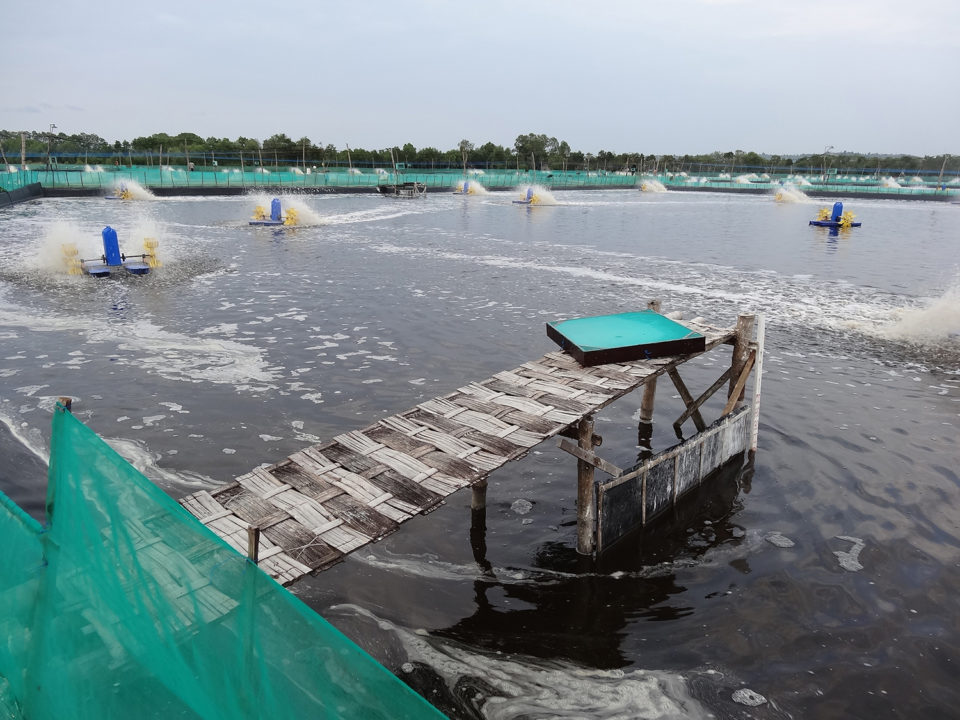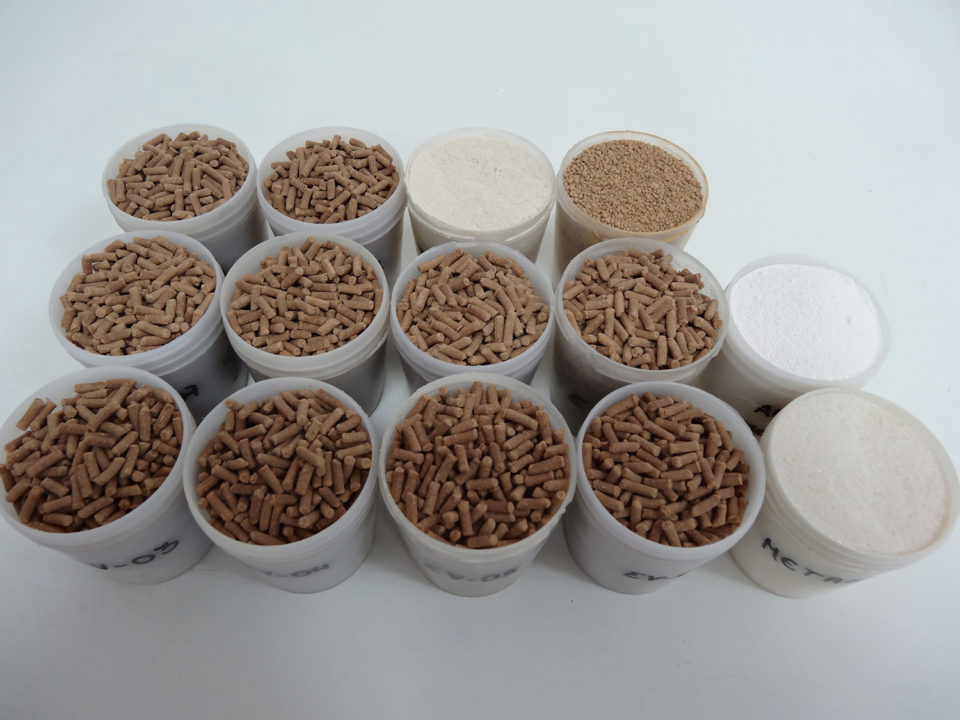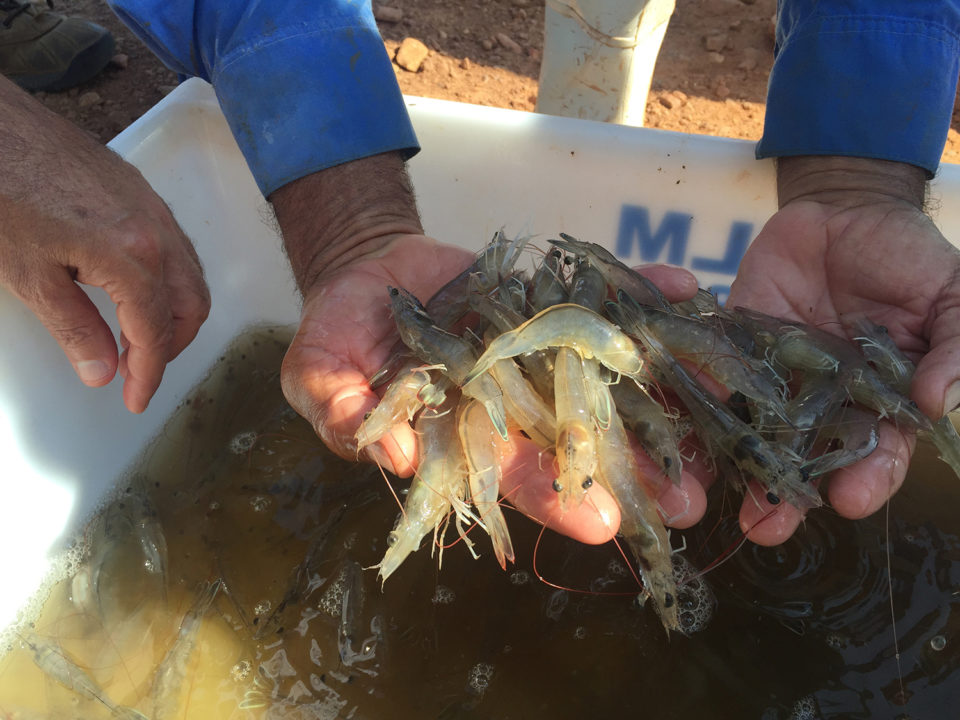Important to meet essential amino acid requirements in shrimp and fish diets

Aquatic feeds for farmed fish and shrimp are fine-tuned to meet the species’ nutrient requirements targeting specific stages of development, culture system and farm production levels, and are manufactured with raw materials similar to those used in the feeding of livestock animals. However, aquatic feeds generally require higher dietary concentration of crude protein (CP) vs. feeds for terrestrial animals.
Many protein ingredients can be used to manufacture aquatic feeds, but fishmeal traditionally was the protein source of choice, because of its nutrient value, particularly its high levels of digestible CP and the balanced essential amino acid (EAA) profile. But global fishmeal supplies have leveled off as global aquaculture has grown rapidly, so fishmeal has become less available and more expensive to use as a main protein component in aquatic feeds.
As a result, there has been a need to increase the dietary use of alternative protein sources, and available options include byproducts from agriculture, fisheries or the processing of terrestrial production animals. Some of these ingredients can contain CP levels comparable to fishmeal, but values usually range from 40 to 75 percent.
Selecting a protein ingredient involves considering its amino acid profile and bioavailability and having all essential amino acids (EAAs) present at levels that meet nutrient requirements of the targeted species. However, most alternative ingredients used in shrimp and fish diets are deficient in one or more of the 10 EAAs.
Methionine (Met) followed by lysine (Lys) are the first limiting amino acids in plant and rendered animal byproducts. And increasing Met and Lys levels through the use of fishmeal or other marine protein sources is usually too costly today due to price and market constraints, so the deficient amino acids are frequently supplemented with amino acids.
This article summarizes the original publication (http://dx.doi.org/10.1016/j.aquaculture.2014.04.003) discussing different formulation approaches to meet EAA requirements of fish and shrimp through supplementation of crystalline amino acids.

Formulating for essential amino acids (EAAs)
There are many research studies on protein and amino acid nutrition with a very large number of fish and important shrimp species. A review chapter on protein and amino acid nutrition in fish and shrimp was compiled as part of the recently published National Research Council review entitled Nutrient Requirements of Fish and Shrimp. It provides a review of the nutritional biochemistry of proteins and amino acids, and essential amino acids are discussed in the context of influences that can affect utilization efficiencies.
The EAA requirements established for shrimp and fish result from studies using purified or semi-purified diets made from high-quality ingredients. These diets have low levels of antinutritional factors (ANFs), avoiding negative effects on the digestibility and absorption of the tested EAAs, and proteins used have high digestibility levels. These experimental feeds frequently are designed to exactly meet animal nutrient requirements.
Generally the levels of EAAs in the diet can be improved by increasing the dietary inclusion levels of the feedstuffs containing intact sources of the targeted EAAs, or by supplementing the diet with crystalline amino acids (CAAs). A major challenge for feedmill nutritionists is to maintain feed costs adequate vs. fluctuations in raw material prices. Formulating based on nutrients flexibility to decrease or eliminate the dependence or reliance on high-priced and non-renewable ingredients like fishmeal, while making the feeds performance-equivalent and more cost-competitive.
Nutrient-based formulation approach with crystalline EAAs
Growing inclusion levels of plant and rendered animal byproducts in shrimp and fish diets has resulted in feed mill formulators considering more the total and digestible levels of EAAs. The dietary deficiencies in EAAs, mainly of the total sulfur amino acids (TSAAs, Met plus cysteine), increase proportionally when the levels of plant ingredients increase in the formula.
Currently, least cost formulations using low- or no-fishmeal diets represent a significant challenge to aquafeed nutritionists, especially in regard to the digestible EAA composition, and determining the essential amino acid digestibility coefficient (EAADC) of all protein ingredients that will be used in the formula is desirable to correctly supplement diets with CAAs.
The new NRC (2011) referenced earlier includes EAADC values of 31 protein ingredients for more than 10 species, including commercially significant and emerging species (salmon, rainbow trout, Nile tilapia, cobia, Pacific white shrimp, striped bass, yellowtail, etc.). These data can be used by formulators to differentiate between what is digestible from what is available in EAA content of their formulation matrix. Regrettably, the EAADCs for some farmed aquatic species are still limited and formulators must frequently use EAADCs derived from species with correlated feeding habits (i.e., omnivorous, carnivorous, herbivorous).

Significant issues with nutrient based formulation
Nutrient-based formulation can currently be use by the aquafeed industry because CAAs are now globally available at accessible prices. The CAAs mostly used by the animal feed industry, in order of usage, are the following: DL-methionine or Met analogs, L-lysine, L-threonine, L-tryptophan, L-isoleucine and L valine. However, there are questions about CAA’s biological efficiency, because some researchers have found lower bioefficacy values. The lowest CAA bio-efficacies were found in studies with shrimp due to water leaching problems, due to the slow-feeding habits of shrimp relative to fish.
To overcome the faster CAA absorption and leaching problems, encapsulation, precoating and polymerization techniques are used. CAA can be chemically attached to some proteins, and a pH adjustment of the diet, which typically goes down after CAA supplementation, can also be used to maximize the CAA bio-efficacy. Using efficient feed binders and attractants and increasing the daily feeding frequency at the farm level is recommended to improve assimilation of CAAs by fish and especially by shrimp due to their slow feeding habit.
Supplementation with crystalline EAAs
It is accepted that fishmeal should be replaced with cheaper protein sources to reduce the price of commercial aquatic feeds, and one option to meet the EAA requirements of farmed fish and shrimp while reducing feed costs is through dietary supplementation of CAAs.
There is a relatively wide variation in the dietary Met and Lys requirement values for farmed fish and shrimp. This is due to differences in species requirements, culture systems, developmental stage and composition of experimental diets. The dietary Met requirements for fish and shrimp range from 1.3 to 3.3 percent (minimum–maximum) and 1.4 to 2.9 percent of the dietary CP (dry matter basis), respectively. Proper dietary Met and Lys levels improve the use of other EAAs because they reduce the oxidation rate of other amino acids.
Met and Cys are considered to be the principal sulfur-containing amino acids. Lys is limiting in many plant ingredients commonly used in fish and shrimp artificial diets, and ingredients of animal origin produced under severe conditions may also be Lys deficient. Thus, crystalline Lys supplementation may be required in plant-based diets for the normal growth of shrimp and fish, and L-lysine HCl is the most popular form of synthetic Lys used by the animal feed industry. Met can be partially spared by cysteine (Cys) since Cys is synthesized from Met. Cys can represent 40-60 percent of the total sulfur amino acid requirement (Met + Cys).

Perspectives
The correct supplementation of crystalline amino acids in fish and shrimp feeds provides an opportunity to lower formulation costs, an important consideration because of the limited supply of fishmeal and the volatile commodity market for protein ingredients.
A permanent movement in grower feeds towards very low inclusion of marine proteins has occurred, although fishmeal use may still remain economically competitive at strategic inclusion levels, for some markets and for specialty diets like starters, anti-stress and transition, and premium ones.
The market perceives that all feeds with high levels of fishmeal are high performers and more profitable, but this insight is fast declining with the evolution of formulating on an ingredient basis. Nowadays, to improve competitiveness and effectively apply advancements in aquaculture nutrition aquafeed nutritionists and formulators are using modern, environmentally sound formulation techniques based on nutrient value, on supplementation with crystalline EAAs, and on animal nutrient requirements.
References available from the original publication or first author.
Authors
-
Alberto J.P. Nunes, Ph.D.
LABOMAR – Instituto de Ciências do Mar
Universidade Federal do Ceará
Avenida da Abolição, 3207 – Meireles, Fortaleza, Ceará, 60.165-081, Brazil -
Marcelo V.C. Sá, Ph.D.
Departamento de Engenharia de Pesca
Centro de Ciências Agrárias
Universidade Federal do Ceará
Campus Universitário do Pici, Fortaleza, Ceará 60.356-000, Brazil -
Craig L. Browdy, Ph.D.
R&D Director
Zeigler Bros., Inc.
Gardners PA USA 17324 -
Mercedes Vazquez-Anon, Ph.D.
Novus International
20 Research Park Drive
St Charles, MO 63304 USA
Tagged With
Related Posts

Aquafeeds
Aquaculture Exchange: Rick Barrows
After 14 years with the USDA’s Agricultural Research Service, Rick Barrows talks about the importance of finding ‘complete’ and commercially viable alternative sources of omega-3 fatty acids and continuing innovation in the aquafeed sector.

Aquafeeds
Alternative feed ingredient universe to convene at F3 meeting
What started out as a simple yet ambitious contest to drive innovation in the aquafeed sector has evolved into a fully global competition – and collaboration – amongst ingredient suppliers and feed manufacturers.

Health & Welfare
Effect of dietary methionine on Pacific white shrimp juveniles
This study tested five diets formulated with increasing levels of methionine (Met) and Met + cysteine (Cys) and their effect on growth performance of juvenile Pacific white shrimp stocked at 50, 75 or 100 animals/m2 in a green water system.

Health & Welfare
Fishery byproducts evaluated as feeding stimulants in plant-based shrimp diets
New cost-effective additives, such as fishery byproducts, will likely be needed to meet the increasing demand for feeding stimulants by aquafeed producers.


